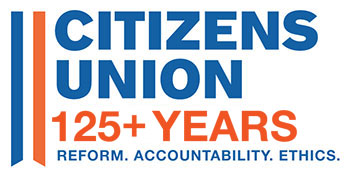Originally Published: February 28, 2012
“A Veto is Essentially A Spanking – It Stings, But It is Temporary”
Citizens Union today held a briefing during which leading redistricting experts from across the country voiced their support for Citizens Union’s call for Governor Cuomo to use his veto threat to achieve permanent redistricting reform through a constitutional amendment rather than opting for an actual veto that would not necessarily achieve any lasting reform.
The experts, with experience drawing lines for other states and evaluating redistricting processes across the nation, noted the unique opportunity in New York for reform that can be achieved by the governor using his leverage to improve the district maps for 2012 while achieving change to the state constitution.
“It is tempting to focus on the outrageous specifics of the Legislature’s actions in order to correct the worst redistricting abuses. But what the proposed plans tell New Yorkers is simple. It’s that the Legislature cannot be trusted,” said Richard Briffault, Joseph P. Chamberlain Professor of Legislation at Columbia Law School, vice chair of the Citizens Union Board of Directors, and author of a recent op-ed on redistricting in the Albany Times Union.
“Legislatures are loathed to give up redistricting power,” declared Michael McDonald, Associate Professor at George Mason University, Non-Resident Senior Fellow at the Brookings Institution, and author of a recent op-ed on redistricting in the Huffington Post. “Recent reforms across the country have come through citizen ballot initiatives, an option unavailable to New Yorkers. If the prospect for constitutional reform presents itself, it should be seized because there may not be another opportunity in our lifetime.”
The group of scholars pointed to the uncertainty surrounding reform through the courts, which would oversee the drawing of maps should a veto occur.
“A veto is essentially a spanking – it stings, but it’s temporary, and will not ultimately stop the bad behavior when Cuomo is no longer governor,” said Justin Levitt, Associate Professor of Law at Loyola Law School, and author of the blog All About Redistricting and the article The Real Potential in Albany’s Mishap of the Moment. “Indeed, given the breakneck speed of the court process, a veto may be overstated even as temporary relief. The meaningful veto threat, instead, provides leverage to fix the broken system once and for all. It may be one step back, but it’s a more important two steps forward.”
It is unknown whether a court in New York will make meaningful enough changes to improve legislative-drawn or proposed maps for 2012 or simply make minimally required changes, given that courts both here and across the country have repeatedly affirmed and shown deference to the legislature’s traditional role in the process of legislative line drawing. While a veto by the Governor would give a court greater leeway to draw lines, oftentimes a court will need to rely upon previously expressed political support – such as with the 2002 district lines – as a basis given its traditional reluctance to participate in too much political decision-making such as drawing maps from scratch. With limited time remaining, the court may simply do what is most expedient. The bottom line is that no one knows for sure what will result. What is known is that a veto will produce no permanent reform.
Robert Abrams, former New York State Attorney General, and Citizens Union Foundation President concluded, “There is a desperate need for permanent structural reform of the political process to achieve independent redistricting. Let’s use the Governor’s threat of a veto to get a constitutional amendment, along with a similar statute as insurance of its passage, to forever remove the redistricting pen from legislators’ hands.”
Reforms to the state constitution would not only create an independent commission for drawing and proposing to the legislature future new district boundaries but potentially give the minority parties in the legislature and third parties a more meaningful role in the process. The commission would also need to operate openly, subject to redistricting standards and real deadlines.
